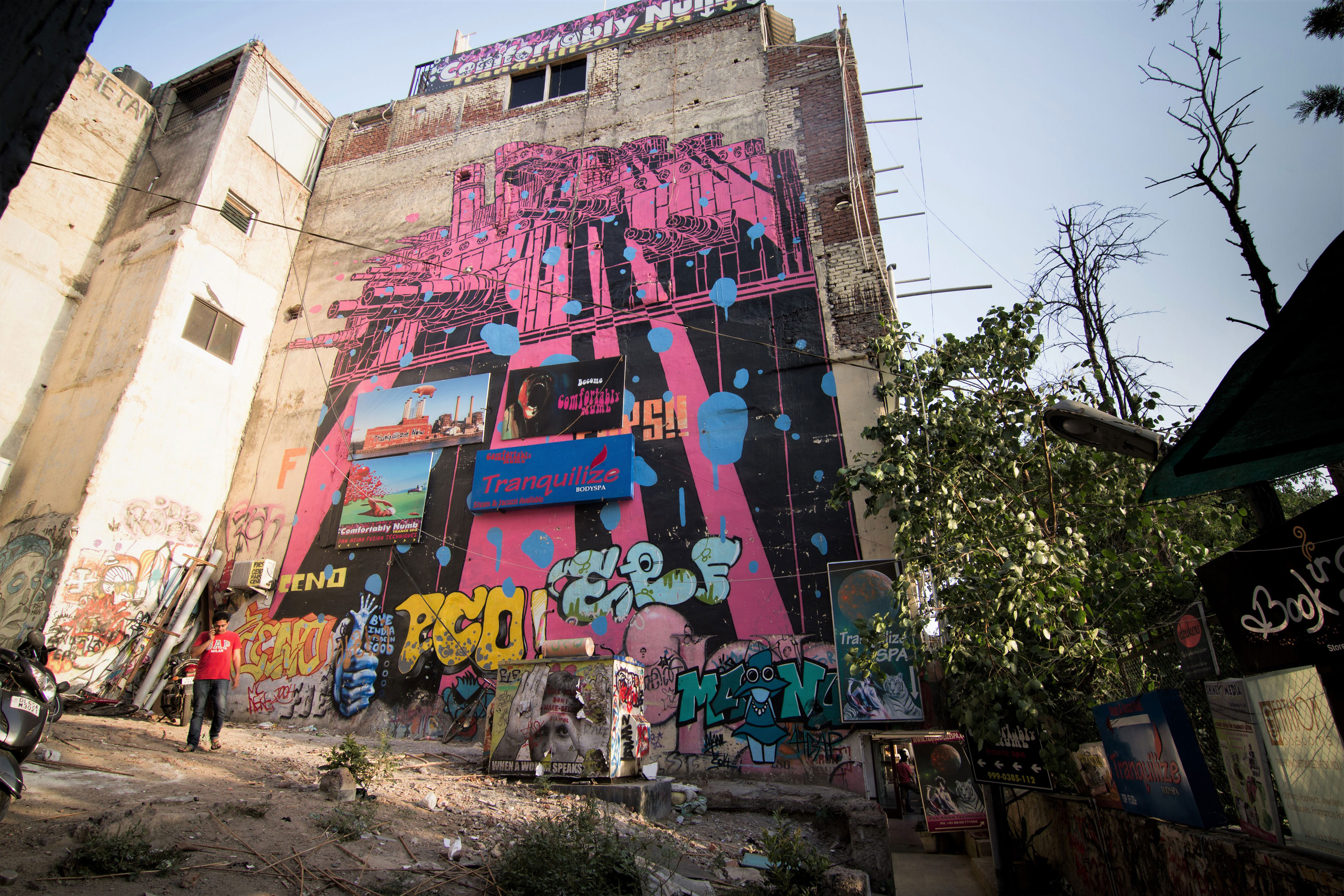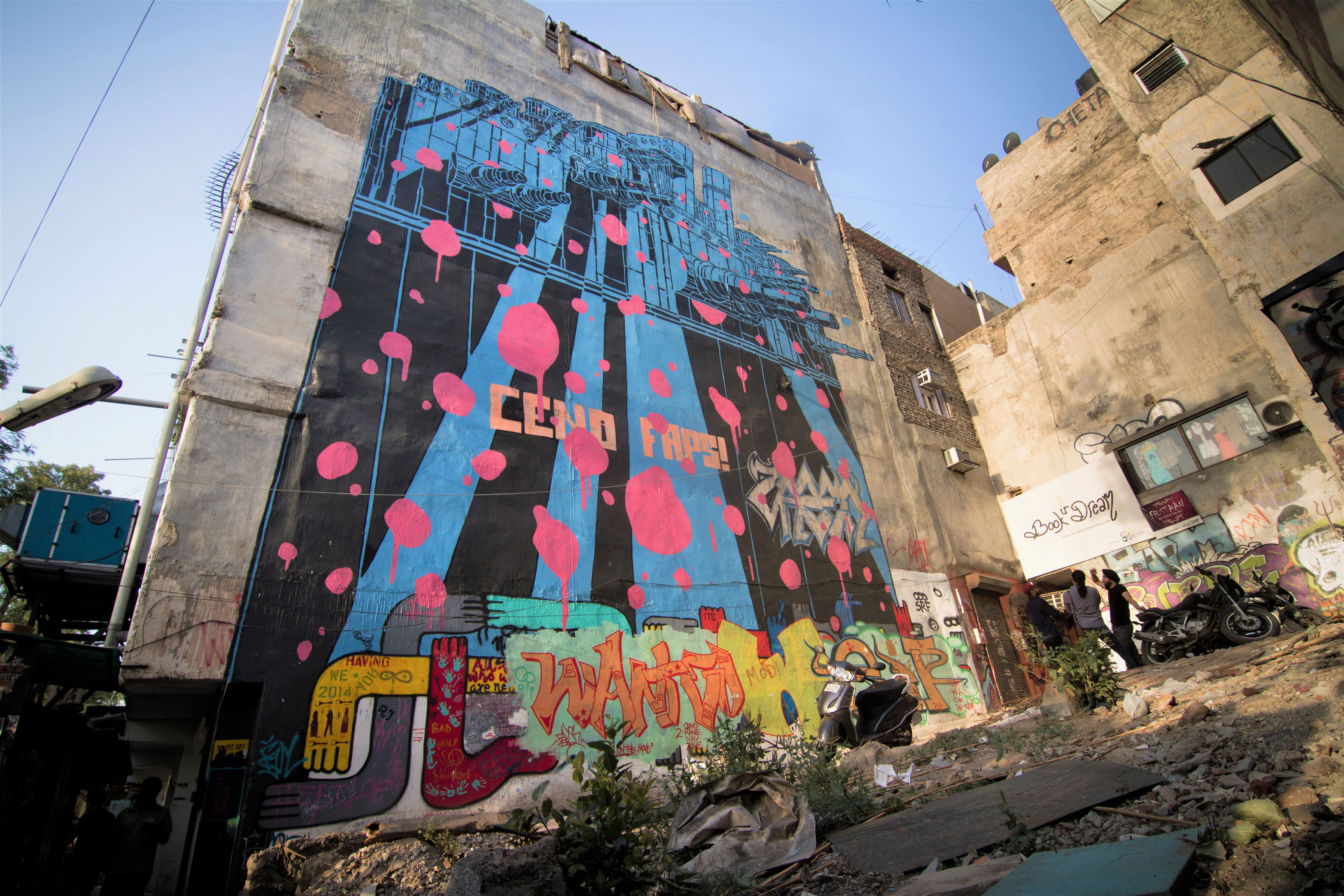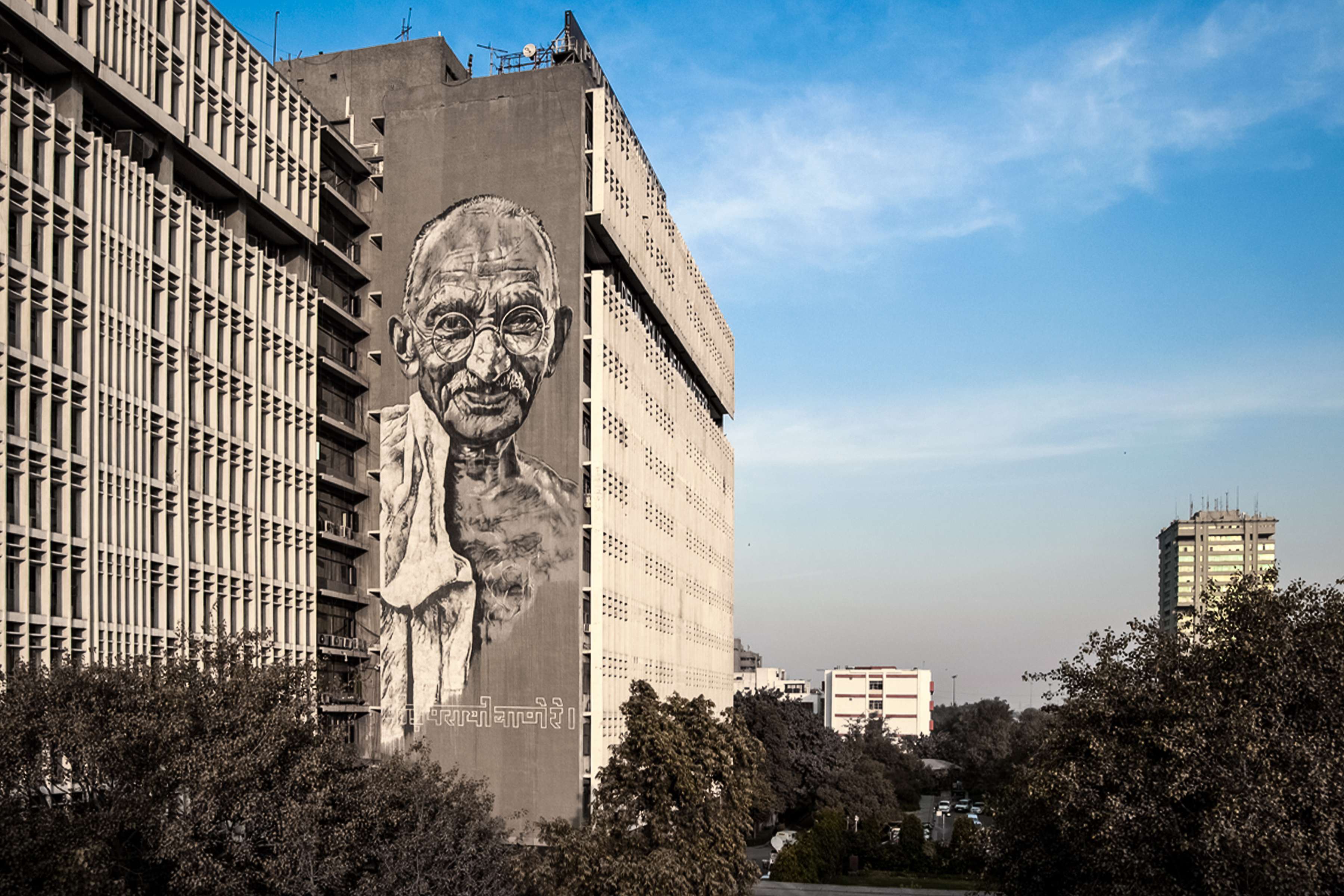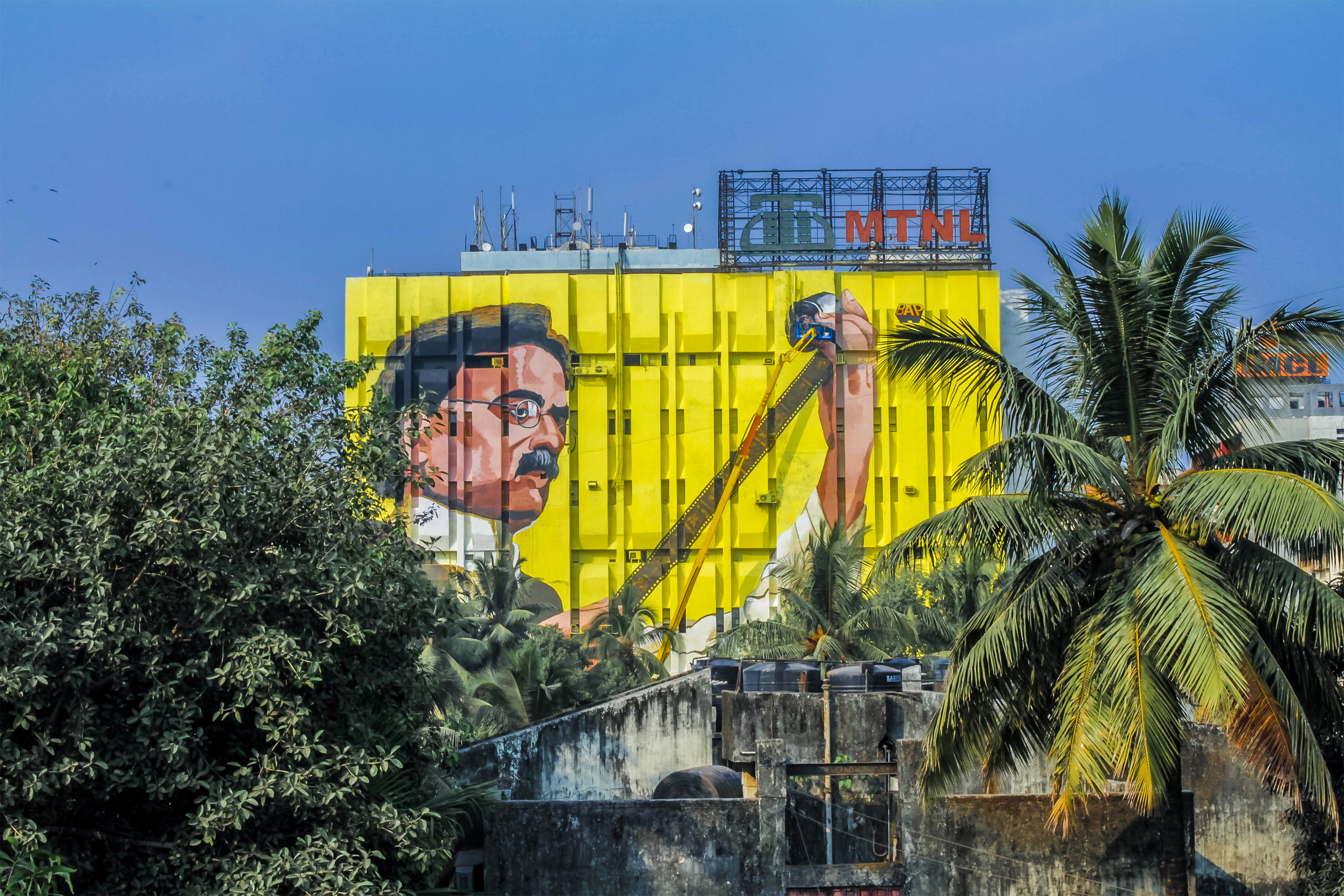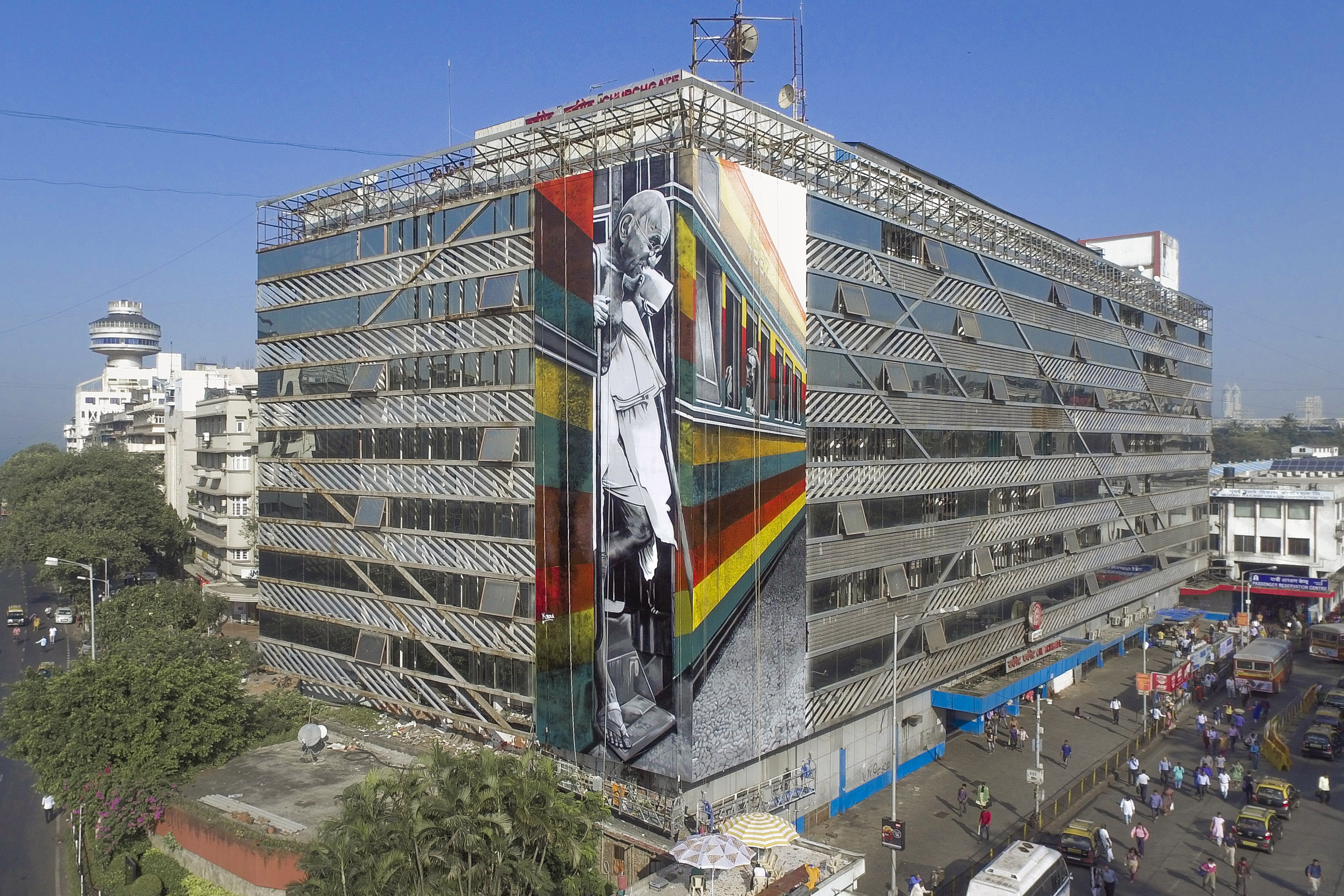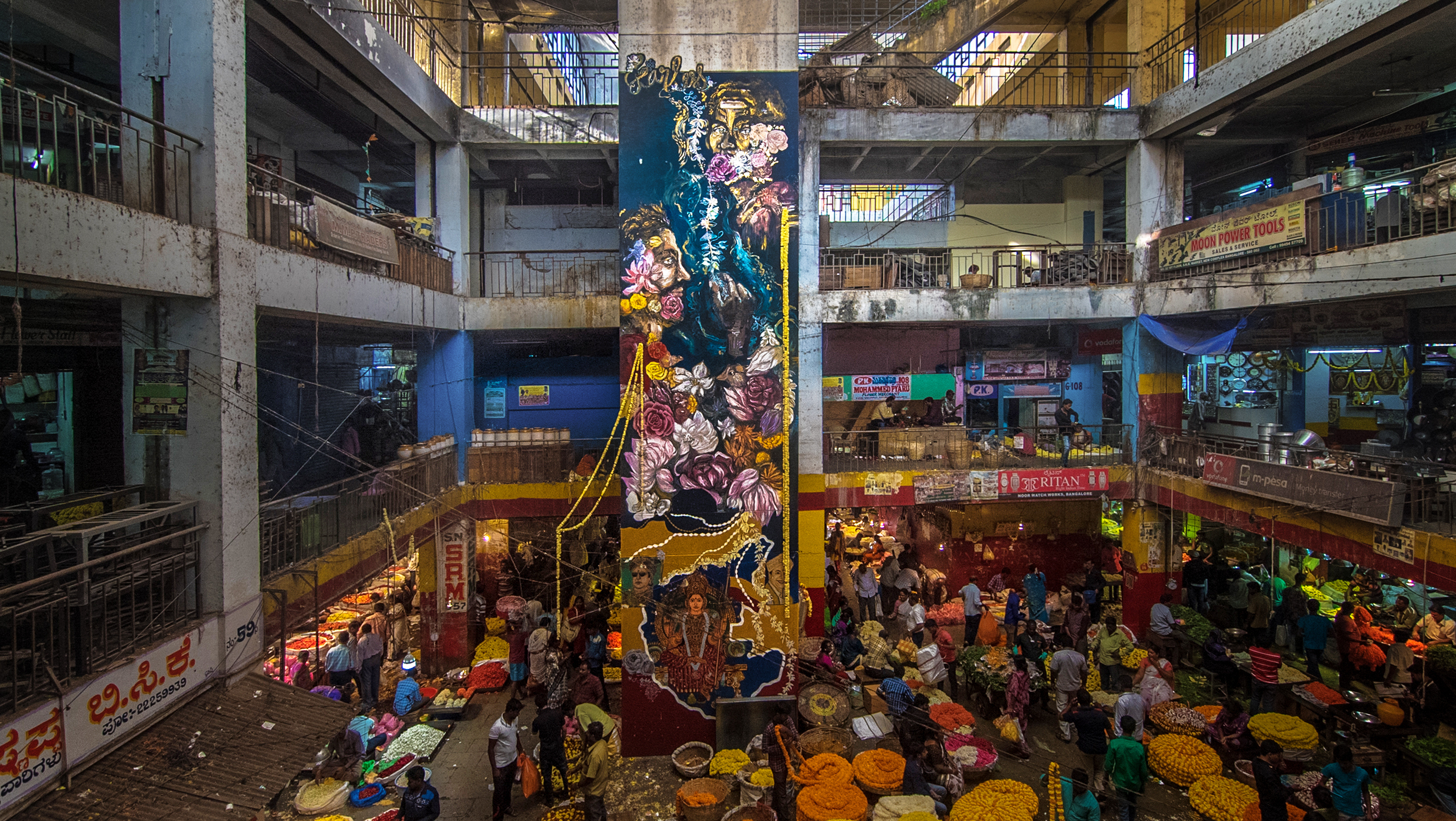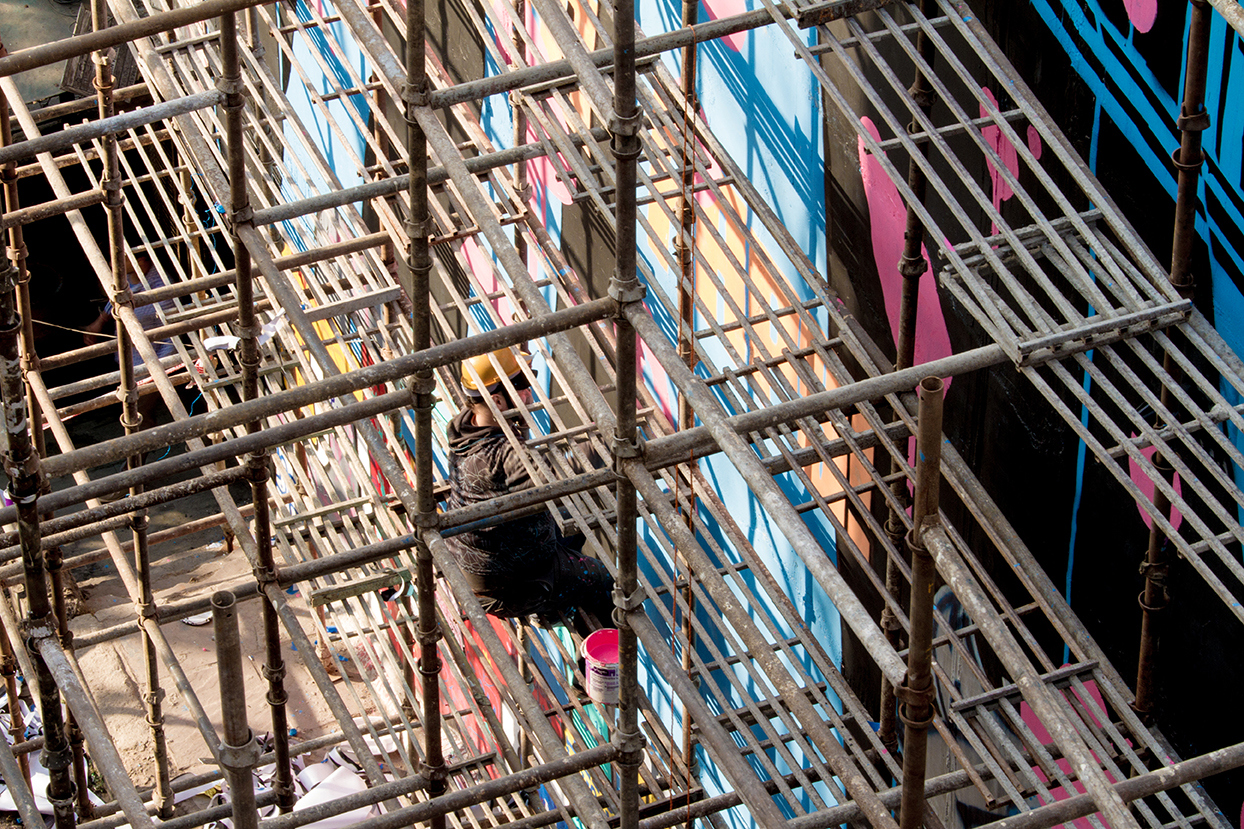
Hauz Khas Village is a region deeply entrenched in the history of New Delhi - both old and contemporary. Tracing back up to the 13th century, it was set up as a water reservoir by the Mughal emperor Allauddin Khilji and served as the main source of water for the city. But in the modern era, the urban village has also become one of Delhi’s most popular social hubs with a host of artist studios, bars, restaurants and cultural spaces opening up. So in a sense, one could still call it New Delhi’s watering hole.
Over the last two decades though, HKV has been an integral part of the Graffiti movement in New Delhi. A vacant lot within the market is well known as the ‘Wall of Fame’ of the graffiti scene here becoming a must-visit site for local and travelling artists to leave a tag behind. The wall has also been the meeting point for many writers from the scene and led to the growth of the community by being a practice wall and a showcase at the same time. Chances are every time you visit, you’ll find something new. Over the years rapid gentrification of the urban village has led to HKV becoming the nightlife centre of Delhi.
During St+art Delhi 2014, as work continued in Shahpur Jat, HKV was activated with interventions by some amazing local and international artists. One of the first pieces done here was by Spanish artist Okuda. The facade was a huge backside wall of a school building which faced the HKV parking lot. This was a high-visibility wall at the entrance of the market and hence Okuda wanted to make something which would pop out and also have some local context. Having seen a lot of animals during the time he had spent in the city, he chose to use them as a central theme in his work, but also play on the idea of capitalism - something that was predominantly the soul of the market.
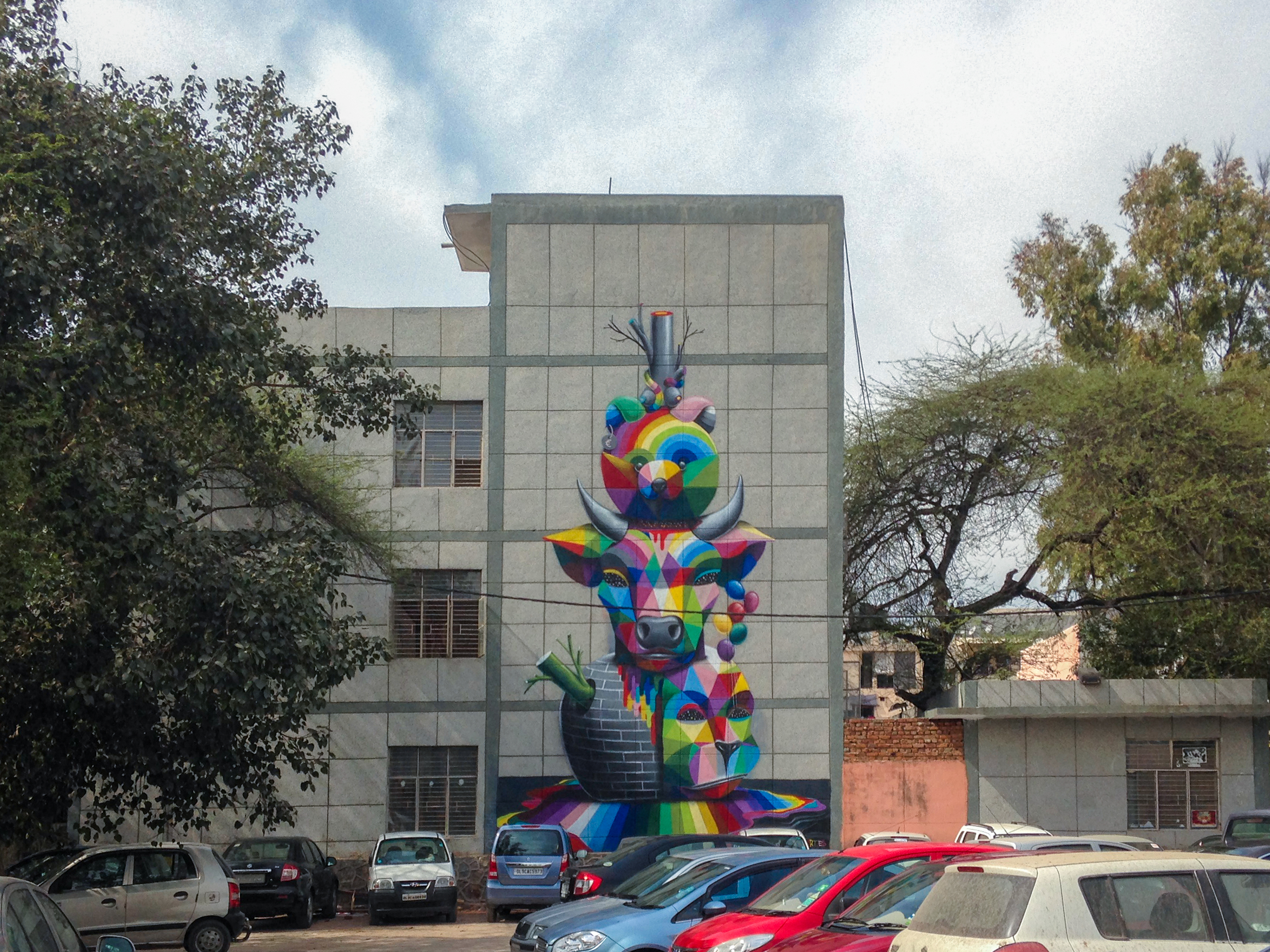
It's like a conflict between the roots and capitalism. My art always deals with such issues. So here I painted a monkey head, a cow head and a bear head inspired by the spirituality of Indian culture. And inside the spirituality of the animals is capitalism, because capitalism is now in India.
- Okuda, artistThe work then began to spread to other areas within the village with Italian artist Alina Vegano painting a facade at the entrance of the village. Alina usually depicts her observations of human behaviour through her minimally illustrated women characters. This piece depicts the delicacy of women in silent conversation.
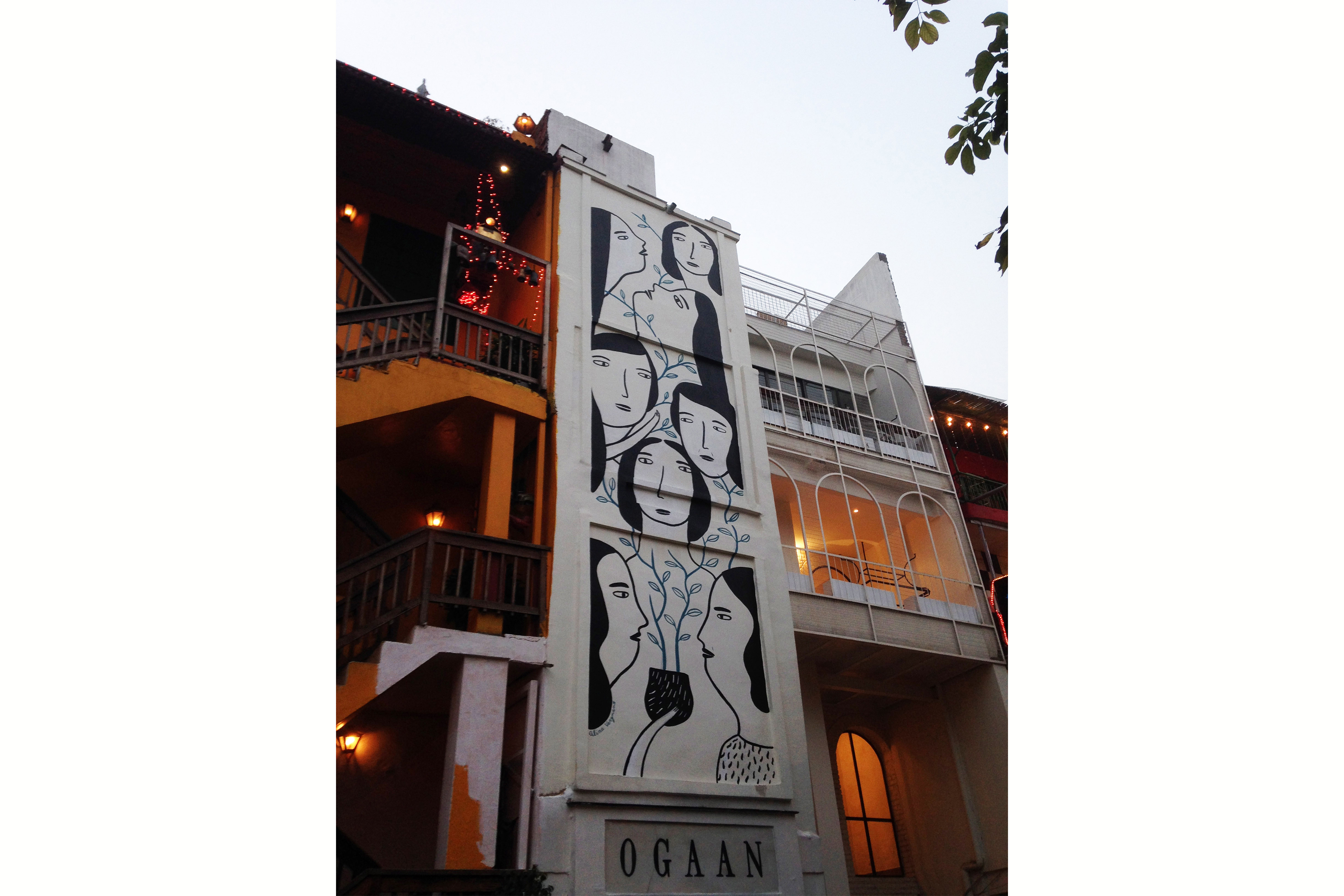
The way that HKV is set up is similar to Shahpur Jat with cafes and bars on the periphery masking the true narrow winding lanes inhabited by villagers who are socio-economically very different from the visitors who now flock to the market. So just like Shahpur Jat, we took our artists within the community to do some works for the locals themselves. Not being content with making something in the parking lot which was essentially just for the visitors, Okuda ventured into the village and made a smaller piece within the heart of the community. This was an anamorphic piece which would go on to become a signature of Okuda’s work in the future - ‘The Chaos Star’.
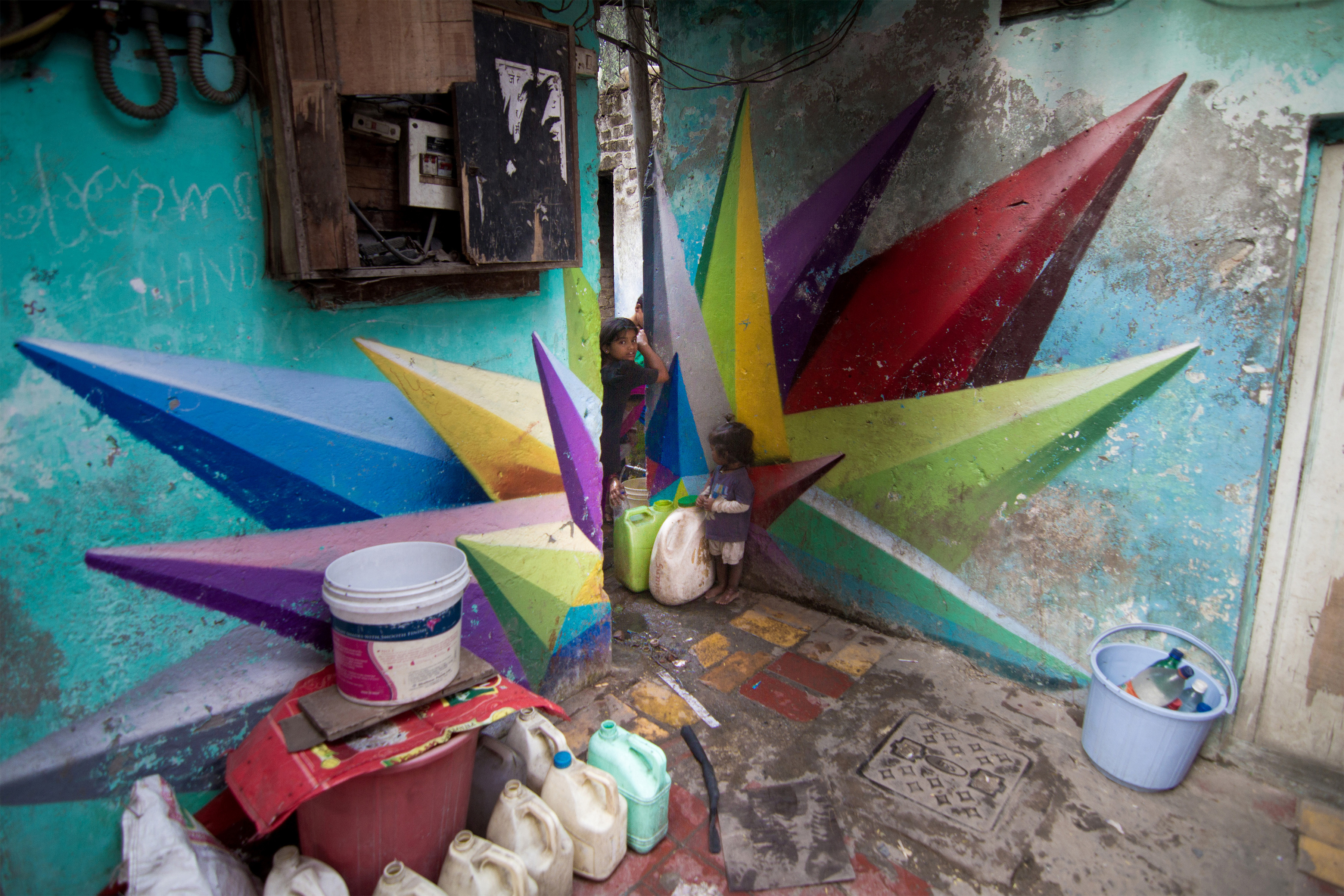
Bond (Germany) is a well-known Graffiti artist who has travelled the world painting. Through his travels in Taiwan, he met Ano who is himself a very well-known figure in the Taiwan graffiti scene. So having worked on individual pieces in Shahpur jat, they decided to do a collab wall on a rooftop in HKV, far from the main gentrified section of the market. They were also accompanied by two local girls who were fairly intrigued about this activity taking place on their rooftop.
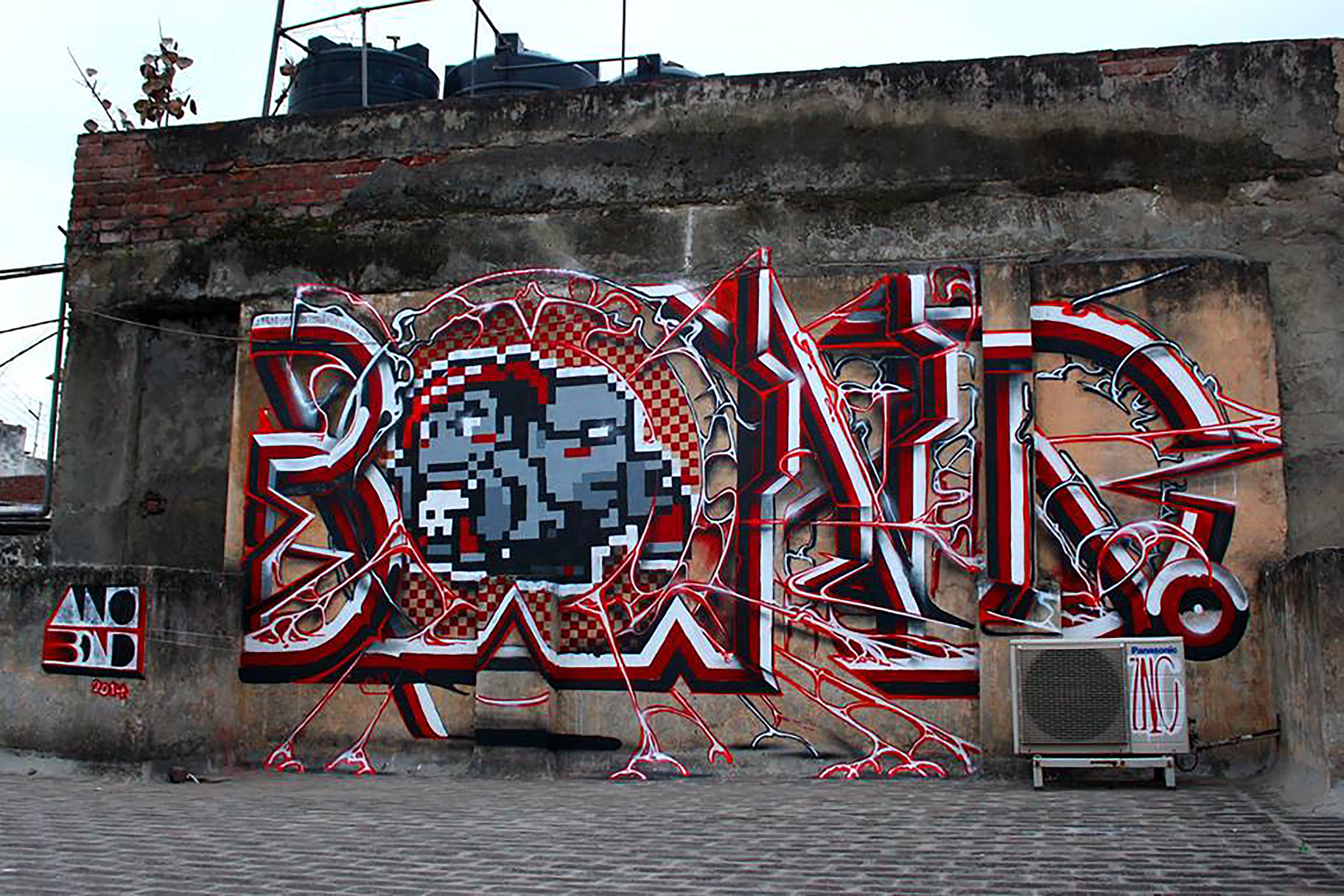
And since no project in Hauz Khas village would be complete without working on the ‘Wall of Fame’, Polish artist M-city began work on the two massive facades of the vacant lot. Since this wall had seen a lot of paint wars across the years, with writers painting over each other, as is tradition on the street, M-City decided to make two huge paint tanks splattering each other with paint bombs as a symbol of the ever-continuing conflict through colour that takes place on the wall of fame. But honouring the code of the street, he didn't go over any of the existing works and instead chose to only focus on the top section of the wall, leaving the lower sections of the wall free for writers.
